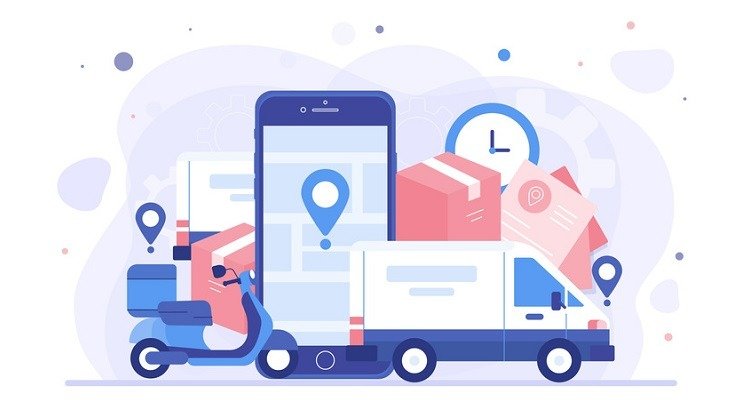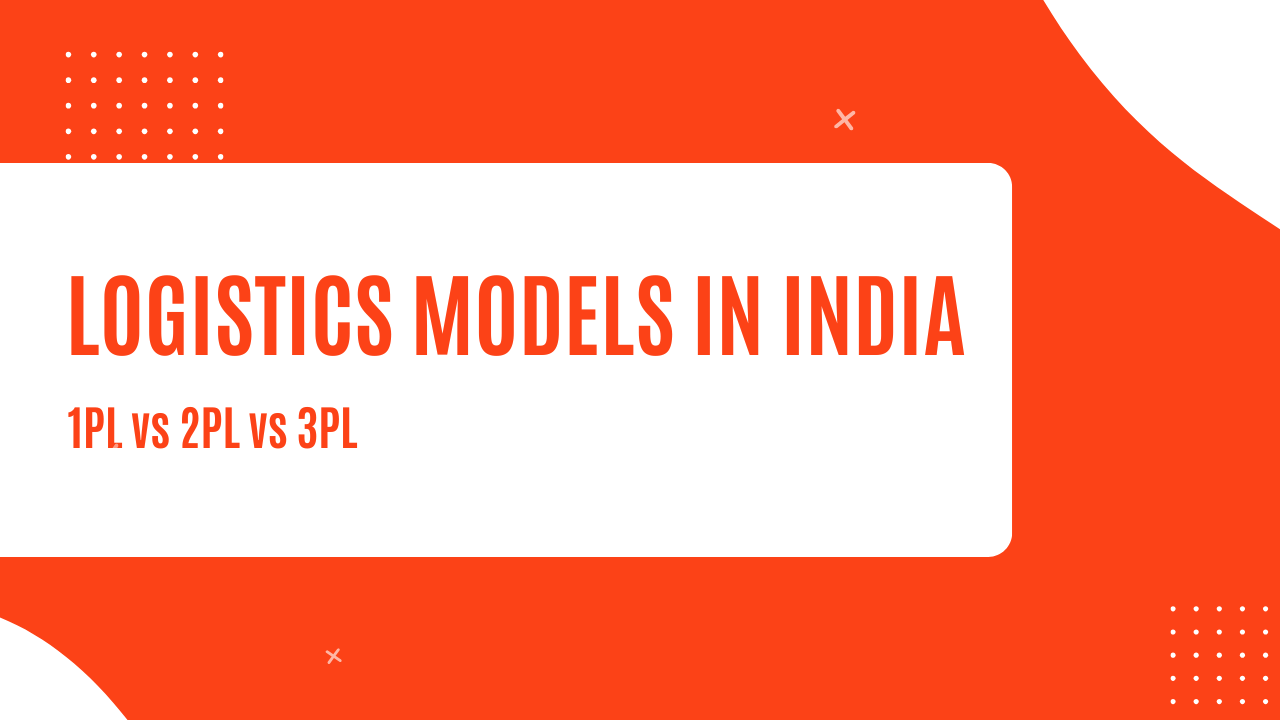TABLE OF CONTENTS
ToggleBlog Summary
The Indian logistics market, currently valued at USD 228.4 billion and rapidly growing, is projected to reach USD 428.7 billion by 2033. To meet the increasing demands driven by e-commerce and other sectors, businesses require advanced Logistics Management Systems (LMS). LMS platforms offer automation, real-time tracking, and compliance features, which are crucial for navigating specific challenges in the Indian market. Selecting the appropriate LMS is a key strategic decision for scaling and success in this evolving sector.
The logistics industry in India is not only expanding, it is growing exponentially. The market is already USD 228.4 billion, one of the largest in the world in 2024. It is expected to increase to USD 428.7 billion by 2033 at a constant 6.5% CAGR between 2025 and 2033. Ecommerce, fast commerce, retail distribution, and manufacturing are driving this surge and all require faster and more reliable supply chains. While growth is exciting, businesses in India also need to navigate particular Indian challenges: COD / UPI reconciliation, ONDC initiatives, Tier-2 / 3 expansion and GST / eWay bill compliance. Manual systems and fragmented fleets can no longer keep up.
This is where Logistics Management Systems (LMS) comes with automation, real-time visibility, cost control, and compliance readiness. To achieve sustainable growth in the rapidly evolving Indian market, the selection of the appropriate LMS has become a strategic concern of companies interested in scaling.

What is a Logistics Management System?
A Logistics Management System (LMS) is a software platform that helps businesses plan, execute, and optimize logistics operations. An LMS addresses the entire logistics lifecycle, from order placement and dispatch to tracking and delivery, invoicing, and reverse logistics. LMS platforms are very useful for Indian businesses that deal with fragmented fleets, compliance, and cost-sensitive operations. These platforms automate manual workflows, minimize human error, and provide dashboards for realtime decision making. They also allow AI driven route planning, inventory management, and freight management. By allowing businesses to cost effectively serve customers while scaling growth, LMS serve as a “control tower” with enhanced visibility of the logistics networks, compliance and cost effectiveness.
Key Features of Logistics Management System
AI driven route optimization will ensure that delivered packages use the most efficient routes possible by considering traffic, distance, and any required delivery deadlines. In doing so, the platform minimizes fuel consumption, maximizes fleet utilization and decreases the cost per order. In India and especially in congested metropolitan areas and densely populated rural networks, there will be cost saving opportunities, as well as faster delivery for customers.
- AI-Driven Route Planning
AI driven route optimization will ensure that delivered packages use the most efficient routes possible by considering traffic, distance, and any required delivery deadlines. In doing so, the platform minimizes fuel consumption, maximizes fleet utilization and decreases the cost per order. In India and especially in congested metropolitan areas and densely populated rural networks, there will be cost saving opportunities, as well as faster delivery for customers. - Real-Time Tracking & IoT Dashboards
Businesses and customers benefit from visibility of deliveries with real-time GPS tracking. IoT sensors can help monitor vehicles and their condition, the temperature of goods, and idle time. This kind of visibility will reduce customer complaints, fraud, and create a level of trust that is indispensable in India’s competitive ecommerce marketplace. - Freight, Order & Inventory Management
LMS solutions can help manage freight, orders, and inventory together on one dashboard to create visibility on stock levels, facilitate faster dispatch times, and minimize order cancellations. For businesses that manage multiple warehousing operations, the stock management feature is important to avoid overstocking or stockouts as they go from Tier 2/3 to Tier 1 establishments. - Automated Invoicing & Compliance
Indian businesses face strict compliance around GST filings, eWay bills, and audit trails. LMS automates invoicing and integrates with government systems, reducing manual errors and delays. Automated compliance saves businesses time while avoiding penalties. - Fleet & Driver Management
Fleet management modules track vehicle usage, fuel consumption, and maintenance schedules. Driver apps ensure smoother coordination, route navigation, and digital proof-of-delivery. For logistics businesses relying heavily on gig workers, this improves accountability and efficiency. - Analytics & Predictive Insights
Dashboards provide insights into CPO (Cost per Order), SLA adherence, and NDR rates. Predictive analytics forecast demand, helping businesses optimize fleet size and warehouse placement. With data-driven decisions, companies can reduce wastage and scale sustainably.

Top Platforms of Logistics Software in India
1. Pidge
Pidge is a next-generation unified logistics platform built for India’s evolving delivery ecosystem. Unlike traditional LMS players, it combines 1PL (own fleets), 2PL (partner fleets), and 3PL (vendors) into one system, offering businesses unmatched flexibility. Powered by TITAN AI allocation and MORRE routing, Pidge ensures SLA reliability, cost efficiency, and transparency. With COD/UPI workflows, ONDC integration, and control tower visibility, Pidge empowers businesses to scale seamlessly across ecommerce, retail, and quick commerce.
- USP: India-first unified orchestration with TITAN AI allocation and MORRE routing.
- Best For: SMBs and enterprises in ecommerce, quick commerce, and retail seeking scalable last-mile control.
- Key Features: AI allocation, intelligent routing, COD/UPI workflows, ONDC integration, control tower dashboards, and exception management.
2. NYGGS
NYGGS is a comprehensive ERP and logistics management system developed in India, designed to streamline end-to-end supply chain processes. Its modular approach makes it highly adaptable for enterprises dealing with complex, multi-vertical operations. By integrating order management, warehousing, transport, and invoicing into one system, NYGGS helps businesses achieve higher efficiency, compliance, and scalability across diverse logistics needs.
- USP: ERP-first LMS with strong compliance modules.
- Best For: Large businesses and enterprises managing multi-vertical logistics operations.
- Key Features: Order and freight management, invoicing, warehouse integration, real-time dashboards, and compliance tracking for GST/eWay bills.
3. LogiNext
LogiNext is a global AI-driven logistics automation platform with a strong foothold in India. It specializes in predictive analytics and route optimization, enabling enterprises to plan and execute high-volume deliveries with precision. Trusted by leading retailers, ecommerce players, and 3PLs, LogiNext empowers businesses to reduce costs, optimize resources, and enhance customer experiences through smarter, data-backed logistics management.
- USP: Predictive logistics powered by AI.
- Best For: Enterprises with high delivery volumes needing AI-driven cost optimization.
- Key Features: Route planning, real-time tracking, demand forecasting, driver performance analytics, and SLA monitoring.
4. Shipsy
Shipsy is an enterprise-grade logistics management and visibility platform widely used by ecommerce, retail, and manufacturing companies. It focuses on data-driven decision-making, giving businesses real-time visibility into 3PLs, vendors, and fleets. Shipsy simplifies the complexities of multi-partner logistics networks, enabling companies to orchestrate deliveries efficiently while reducing leakages, ensuring COD reconciliation, and improving SLA adherence at scale.
- USP: Analytics-first delivery orchestration.
- Best For: Enterprises requiring deep visibility across vendors and 3PLs.
- Key Features: SLA dashboards, COD reconciliation, vendor orchestration, reverse logistics, and performance analytics.
5. Locus
Locus is a leading logistics optimization software provider offering end-to-end solutions across first, middle, and last-mile delivery. Known for its AI-powered routing and dynamic dispatch capabilities, Locus helps enterprises manage vast supply chains efficiently. By bridging omnichannel fulfillment with predictive logistics, it empowers businesses to cut costs, improve fleet utilization, and deliver consistent customer experiences across multiple cities and industries.
- USP: All-mile AI optimization for scalability.
- Best For: Enterprises with multi-city, large-scale supply chains.
- Key Features: Dynamic dispatching, AI route optimization, omnichannel order management, and cost-saving analytics.
6. FarEye
FarEye is a configurable logistics management platform designed for precision-driven industries like pharma, cold chain, and food delivery. It allows enterprises to tailor workflows to meet compliance requirements and industry standards. With strong reverse logistics, automation, and compliance features, FarEye ensures error-free operations in sectors where delivery accuracy and safety are paramount, making it a preferred choice for regulated industries.
- USP: Strong in compliance-heavy, regulated deliveries.
- Best For: Enterprises in pharma, cold chain, and food logistics.
- Key Features: Reverse logistics, dispatch automation, cold-chain compliance, and SLA tracking.
7. WebXpress
WebXpress is a cloud-based logistics ERP system designed to bring digital transformation to traditional logistics networks. It connects transportation, warehousing, and distribution on one unified platform, enabling seamless operations for enterprises. With its focus on automation and visibility, WebXpress helps businesses reduce manual errors, optimize fleet performance, and gain end-to-end control over freight and delivery management processes.
- USP: Integrated ERP for logistics and transport.
- Best For: Enterprises managing traditional logistics fleets and distribution networks.
- Key Features: Transport scheduling, route planning, warehouse visibility, freight invoicing, and fleet tracking.
Choosing the Right LMS for Your Business
- SMBs & D2C Brands
Small brands and D2C businesses are typically struggling with small budgets and low volumes of deliveries. Affordability and rapid deployment are important to them. Solutions such as Pidge and Zoho provide plug-and-play options that need little configuration and still allow COD/UPI, real-time tracking, and order management. These are India-first ready tools that enable businesses to enter Tier-2 and Tier-3 cities without investing heavily. Intuitive dashboards and flexible integrations allow SMBs to concentrate on increasing sales, and the software will provide reliability in delivery, customer satisfaction, and compliance. - Enterprises
Companies usually have thousands of orders per day in different cities, and the logistics systems must be scalable, customizable, and compliant. Solutions like Pidge, Shipsy, Locus, and WebXpress are well-suited for these needs. They offer AI-driven dispatch, predictive analytics, multi-carrier orchestration, and integration with ERP/CRM systems. Other advanced features that are beneficial to enterprises include control tower dashboards, monitoring SLA compliance, and automated eWay bill compliance. These capabilities enable them to maximize costs, minimize inefficiencies, and deliver on time. In a large organization, scalability and powerful analytics are a must-have in an LMS. - Niche Industries
Sectors like pharma, dairy, and cold chain logistics have specialized requirements that go beyond standard delivery operations. Compliance, temperature control, and precise SLAs are critical. Platforms such as FarEye cater to regulated industries with reverse logistics, cold-chain monitoring, and compliance-first workflows. On the other hand, Pidge is a strong fit for hyperlocal delivery and quick commerce, thanks to its AI-powered allocation and ONDC readiness. For niche businesses, choosing an LMS that addresses industry-specific needs ensures error-free deliveries, regulatory compliance, and customer trust, while still supporting scale and efficiency.
Future Trends in Logistics Software
The logistics industry is moving towards AI, IoT, and automation. Generative AI will power demand forecasting, resource planning, and automated exception handling. IoT devices will provide granular data for fleet and warehouse optimization. Digital twins will allow businesses to simulate entire supply chains before execution. In India, regulatory frameworks like ONDC and eWay bill automation will shape adoption. Businesses that invest in future-ready LMS will achieve lower CPO, higher SLA adherence, and sustainable scalability.
Conclusion
Logistics Management Systems are no longer optional, they are essential for businesses navigating India’s complex and fast-evolving logistics landscape. By automating processes, providing visibility, and ensuring compliance, LMS platforms reduce costs while improving customer experiences. Whether you’re a small D2C brand or a large enterprise, choosing the right LMS depends on scale, industry fit, and India-first readiness. Among market leaders, Pidge stands out as a disruptor with unified orchestration, AI-driven allocation, and compliance readiness, making it an ideal partner for businesses aiming to scale confidently in 2025 and beyond.

